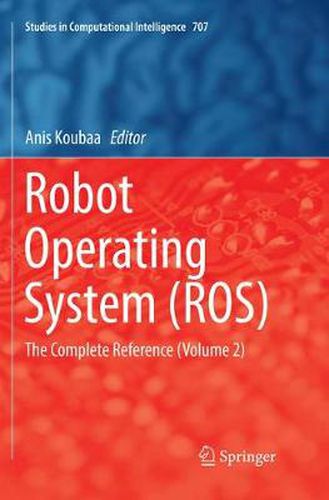Readings Newsletter
Become a Readings Member to make your shopping experience even easier.
Sign in or sign up for free!
You’re not far away from qualifying for FREE standard shipping within Australia
You’ve qualified for FREE standard shipping within Australia
The cart is loading…






This title is printed to order. This book may have been self-published. If so, we cannot guarantee the quality of the content. In the main most books will have gone through the editing process however some may not. We therefore suggest that you be aware of this before ordering this book. If in doubt check either the author or publisher’s details as we are unable to accept any returns unless they are faulty. Please contact us if you have any questions.
This second volume is a continuation of the successful first volume of this Springer book, and as well as addressing broader topics it puts a particular focus on unmanned aerial vehicles (UAVs) with Robot Operating System (ROS). Consisting of three types of chapters: tutorials, cases studies, and research papers, it provides comprehensive additional material on ROS and the aspects of developing robotics systems, algorithms, frameworks, and applications with ROS.
ROS is being increasingly integrated in almost all kinds of robots and is becoming the de-facto standard for developing applications and systems for robotics. Although the research community is actively developing applications with ROS and extending its features, amount of literature references is not representative of the huge amount of work being done.
The book includes 19 chapters organized into six parts: Part 1 presents the control of UAVs with ROS, while in Part 2, three chapters deal with control of mobile robots. Part 3 provides recent work toward integrating ROS with Internet, cloud and distributed systems. Part 4 offers five case studies of service robots and field experiments. Part 5 presents signal-processing tools for perception and sensing, and lastly, Part 6 introduces advanced simulation frameworks.
The diversity of topics in the book makes it a unique and valuable reference resource for ROS users, researchers, learners and developers.
$9.00 standard shipping within Australia
FREE standard shipping within Australia for orders over $100.00
Express & International shipping calculated at checkout
This title is printed to order. This book may have been self-published. If so, we cannot guarantee the quality of the content. In the main most books will have gone through the editing process however some may not. We therefore suggest that you be aware of this before ordering this book. If in doubt check either the author or publisher’s details as we are unable to accept any returns unless they are faulty. Please contact us if you have any questions.
This second volume is a continuation of the successful first volume of this Springer book, and as well as addressing broader topics it puts a particular focus on unmanned aerial vehicles (UAVs) with Robot Operating System (ROS). Consisting of three types of chapters: tutorials, cases studies, and research papers, it provides comprehensive additional material on ROS and the aspects of developing robotics systems, algorithms, frameworks, and applications with ROS.
ROS is being increasingly integrated in almost all kinds of robots and is becoming the de-facto standard for developing applications and systems for robotics. Although the research community is actively developing applications with ROS and extending its features, amount of literature references is not representative of the huge amount of work being done.
The book includes 19 chapters organized into six parts: Part 1 presents the control of UAVs with ROS, while in Part 2, three chapters deal with control of mobile robots. Part 3 provides recent work toward integrating ROS with Internet, cloud and distributed systems. Part 4 offers five case studies of service robots and field experiments. Part 5 presents signal-processing tools for perception and sensing, and lastly, Part 6 introduces advanced simulation frameworks.
The diversity of topics in the book makes it a unique and valuable reference resource for ROS users, researchers, learners and developers.